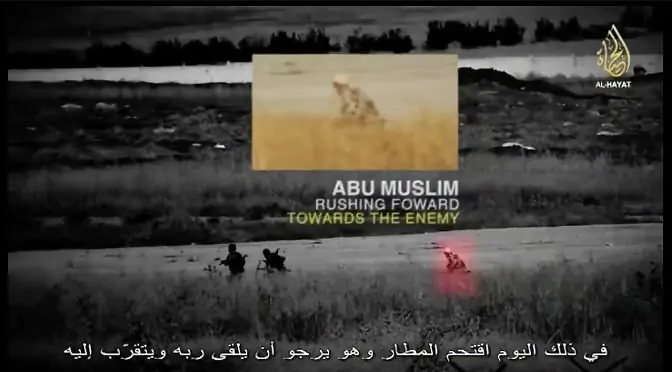Whatever way one wants to see it, despite defeats in Syria, Iraq, Libya, and the Philippines, the Islamic State has not disappeared and will most probably remain a feature of our world for some times. The regular terrorist attacks taking place throughout the world are there to remind us that to win over ideas – …
Tag Archives: Daesh
Understanding the Islamic State’s System – Means of Violence
As we seek to assess the Islamic State’s ability to create a real and sustainable polity, meanwhile understanding it better, we first focused on the overall structure of the Islamic State and its Khilafah, which can usefully be seen as a wilayat system. Then, we started analysing the top leadership constituted by the Calif (Khalif, Khalifa), the Shura Council and the Sharia Council, what these institutions mean and entail in terms of legitimacy. Here, after having rapidly explained our methodology, using Max Weber’s (1919) classical distinction, we shall focus on the monopoly of the legitimate means of violence, i.e. military, security and police. With the next post, we shall deal with the extraction of resources as well as with all the other administrative agencies. Of course, legitimacy …
Continue reading “Understanding the Islamic State’s System – Means of Violence”
Scenarios for the Future of Libya within the Next Three to Five Years
Image: “Rebels Heading for Tripoli” by Surian Soosay [CC BY 2.0] via Flickr Now that we have identified and understood the actors in Libya’s civil war (see State of Play), we may outline the various scenarios regarding Libya’s future within the next three to five years. A civil war with two rival governments, armed coalitions, …
Continue reading “Scenarios for the Future of Libya within the Next Three to Five Years”
Understanding the Islamic State’s System – Structure and Wilayat
Conflicting information regarding the Islamic State and the evolution of the war emerge everyday from the media, while analysts, commentators and official statements are no less swaying. For example, on 13 April 2015, “Army Col. Steve Warren, a Pentagon spokesman” stressed that the Islamic State had “ceded 5,000 to 6,000 square miles of territory”, painting a “rosier portrait” as …
Continue reading “Understanding the Islamic State’s System – Structure and Wilayat”
War in Libya and Its Futures – Tribal Dynamics and Civil War (2)
Throughout their history (see “Tribal Dynamics and Civil War (1)“), Libya’s tribes have not been based exclusively on systematic tribalism, but rather on a flexible tribal ideology that is grounded in identity and shifts according to circumstances and practical opportunities. This shifting tribal ideology makes the non-Arab tribes different from the majority of the actors in Northern Libya, who are more or less bound by religious or political ideology – and thus ally with similar groups. Furthermore, tribalism naturally produces “nepotism and favoritism” amongst tribal groups and families (Varvelli, ISPI, May 2013), but Libya’s minority tribes have also shown that they can unite to protest shared grievances, as we shall see below. The Amazigh (Berber), Toubou, and Tuareg tribes have been …
Continue reading “War in Libya and Its Futures – Tribal Dynamics and Civil War (2)”
The Islamic State Psyops – Foreign Fighters’ Complexes (2)
After having seen the threats linked to the existence of foreign fighters within the Islamic State (The Foreign Fighters’ Threat), we focused on identifying the reasons why those foreign fighters would join the Islamic State, using the latter psyops products and locating them within the framework of existing findings (Attracting Foreign Fighters (1)). With that post, we presented the psyops “recruiting” products used for this study, then, taking stock of the research done on foreign fighters by the International Center for the Study of Radicalisation and Political Violence (ICSR) and by the Sufan Group, we focused on two core elements that are meant to be present for all recruited foreign fighters: a quest for meaning and purpose and a need for belonging. Using the Islamic State …
Continue reading “The Islamic State Psyops – Foreign Fighters’ Complexes (2)”
The Islamic State Psyops – Attracting Foreign Fighters (1)
After having pointed out the main risks entailed by the existence of foreign fighters within the ranks of the Islamic State and by their rising numbers (see The Islamic State Psyops – The Foreign Fighters’ Threat), we shall now turn to the reasons that push individuals to join the Islamic State. Within the framework of existing findings resulting from current research, notably by the International Center for the Study of Radicalisation and Political Violence (ICSR) and by the Sufan Group, we shall analyse the Islamic State psyops products and underline the specific points utilised in the recruitment effort. Indeed, the increase in foreign fighters mobilization as underlined previously would tend to imply that the Islamic State is relatively successful in recruiting, thus that it knows well enough …
Continue reading “The Islamic State Psyops – Attracting Foreign Fighters (1)”
The Islamic State Psyops – The Foreign Fighters’ Threat
One of the many issues that needs to be addressed regarding the Islamic State is that it attracts foreign fighters, as abundantly reported in the media. This issue is also one of the focuses of the latest issue of the Islamic State psyops product, Dabiq 7 (12 Feb 2015), as it features in five articles: “Major operations in Libya and Sinai” (foreign fighters from Tunisia and Sudan), pp. 40-41; “Among the believers are men: Abu Qudamah al-Misri” (foreign fighters from the UK), pp. 46-49; “A brief interview with Umm Basir al-Muhajirah” (foreign fighter from France), pp. 50-51; “The good example of Abu Basir al-Afriqi” (foreign fighter from France), pp. 68-71; “Interview with Abu Umar al-Baljiki” (foreign fighters from Belgium), pp. 72-75. This …
Continue reading “The Islamic State Psyops – The Foreign Fighters’ Threat”
The Red (Team) Analysis Weekly 192 – Denying the Islamism of the Islamic State
Each week our scan collects weak – and less weak – signals… We present below some of the most interesting or relevant features for each section. Read the 19 February scan → World (all matters related to war, international and national security) – The focus this week stems from the White House Summit on Countering Violent Extremism currently held in Washington D.C. (see White House Fact sheet). First, in a very “Washingtonian” way, the summit leads to the publication of a host of reports and articles, as think tanks, newspapers, researchers, experts and pundits try to have their voices heard by policy-makers, some of them having been crowd-sourced here and worth checking and reading. Second, the summit forces the various actors to face an issue that …
Continue reading “The Red (Team) Analysis Weekly 192 – Denying the Islamism of the Islamic State”
Portal to the Islamic State War
The Islamic State is one of the contemporary most serious and novel threats to the transitioning (or not) current world order. The fact that war is part and parcel of the Islamic State and its Caliphate or Khilafah (خلافة) very existence is only one of the many challenges and novelties that most of the rest of the world …











